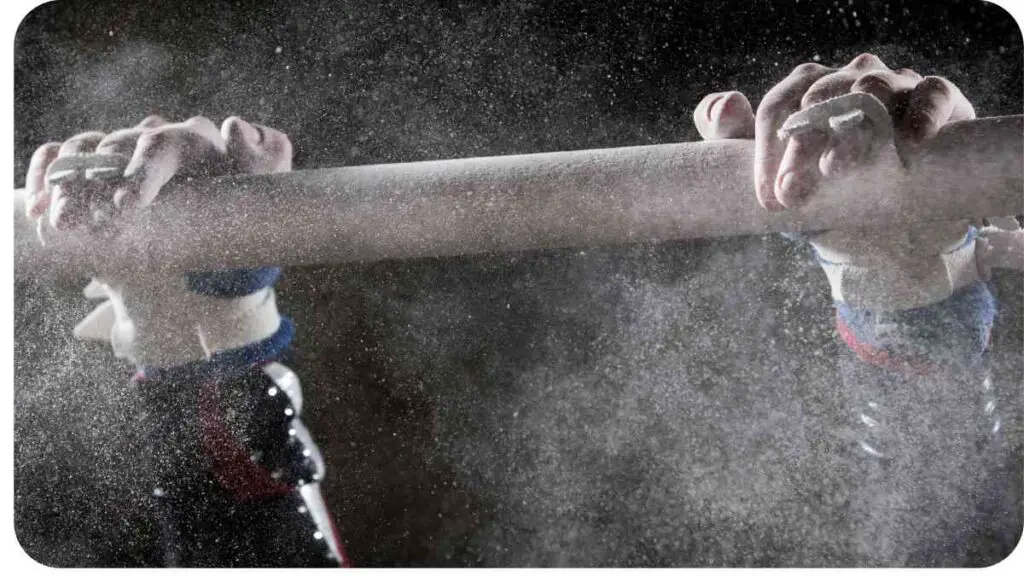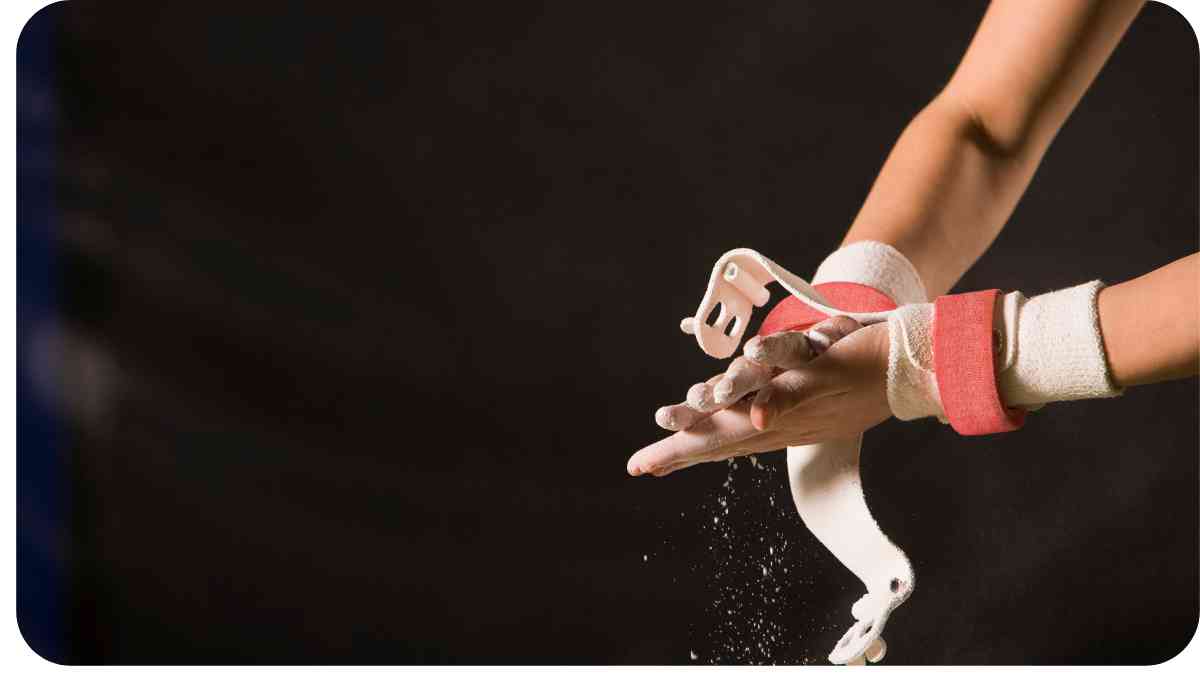Welcome to our comprehensive guide on finding the perfect balance for grip with chalk consistency. As experienced climbers, we understand the challenges that come with finding the right chalk.
In this article, we will discuss the importance of grip in performance, common chalk consistency issues, factors that affect chalk consistency, and tips for improving chalk performance. We will also share recommended chalk brands and their consistency levels.
| Takeaway |
| Finding the right balance of chalk consistency is crucial for achieving optimal grip in various activities. |
| Chalk consistency issues such as being too dry, too moist, or clumpy can affect grip performance. |
| Factors like humidity, temperature, and storage methods can impact the consistency of chalk. |
| Experimentation and adjustment are key in finding the best chalk consistency that suits individual needs. |
| Proper hand care, chalk application techniques, and equipment cleanliness contribute to improved chalk performance. |
| Recommended chalk brands with different consistencies can cater to specific activity requirements. |
| Further reading resources provide additional information on the benefits and usage of chalk. |
| Answers to frequently asked questions provide clarity on chalk’s impact on grip and address common concerns. |
2. Understanding Chalk Consistency
Chalk consistency plays a crucial role in providing the optimal grip for activities such as climbing, weightlifting, gymnastics, and pole dancing. Different chalk consistencies can greatly affect your performance and overall experience. It’s important to find the balance that suits your needs.
Are you tired of grip slipping during your climbs? Learn techniques to improve your hold and enhance your bouldering experience.
3. The Importance of Grip in Performance

Having a strong grip is vital in sports and activities that require precision, strength, and control. A good grip enhances your ability to hold onto surfaces, reduces the risk of slipping, and increases your confidence. Whether you’re an athlete or just starting out, maintaining a strong grip is key to achieving your best performance.
4. Common Chalk Consistency Issues
Understanding common chalk consistency issues can help you identify and address problems with your grip. Let’s explore some of the most frequently encountered issues:
4.1. Too Dry Chalk
When chalk is overly dry, it may lack the necessary adhesive qualities needed to produce an optimal grip. The lack of moisture can make the chalk crumble easily, resulting in poor coverage and reduced effectiveness.
Rope durability is crucial; discover ways to prevent rope fraying and ensure safety on your climbing adventures.
4.2. Too Moist Chalk
On the other hand, if the chalk is too moist, it can become slimy and lose its ability to adhere to your skin. This can lead to a slippery grip, making it challenging to maintain control and stability.
4.3. Clumpy Chalk
Clumpy chalk poses its own set of problems. When the chalk forms large clumps, it becomes difficult to apply evenly. These clumps can also obstruct the pores on your skin, impeding the chalk’s effectiveness.
5. Factors Affecting Chalk Consistency

Understanding the factors that impact chalk consistency can help you take appropriate measures to achieve the ideal grip. Let’s delve into some of the key factors:
5.1. Humidity
Humidity levels play a significant role in chalk performance. In high-humidity environments, chalk tends to absorb moisture, altering its consistency. Conversely, in overly dry environments, chalk may dry out and lose its adhesive properties.
5.2. Temperature
Temperature can affect chalk consistency, much like humidity. Extreme cold or heat can cause changes in the chalk’s moisture content, altering its adhesive qualities. It’s important to store chalk in a temperature-controlled environment to maintain its consistency.
Experiencing resistance due to rope drag? Find solutions to reduce it and enjoy smoother climbing experiences.
5.3. Storage Methods
Proper storage of chalk is essential for maintaining its consistency. Storing chalk in closed containers or sealed bags can help minimize moisture absorption and prevent fluctuations in consistency. Additionally, storing chalk away from direct sunlight or excessive heat can contribute to its longevity.
6. Finding the Optimal Chalk Consistency
To find the optimal chalk consistency that suits your needs and preferences, experimentation is key. Every individual has different requirements, and what works for one person may not work as effectively for another. Consider the following approaches:
6.1. Experiment and Adjust
Try different chalk brands and consistency levels to determine the one that provides you with the best grip. Experimentation will allow you to fine-tune your chalk preference based on your specific needs, the activity you’re engaging in, and the environmental conditions you typically encounter. Keep a record of your experiences with different chalk consistencies, noting how each one affects your grip and overall performance.
Safety first! Explore tips for handling common belay device problems to ensure a secure descent during your climbs.
6.2. Mixing Chalk
If you find that the chalk you’re using is not meeting your requirements, you can experiment with mixing different chalk consistencies together. This way, you can create a blend that combines the desired adhesive qualities and texture you’re looking for. Mixing chalk can be a personalized approach to finding the perfect balance.
7. Tips for Improving Chalk Performance

In addition to finding the right chalk consistency, implementing certain practices can enhance your grip and chalk performance. Consider the following tips:
7.1. Hand Care Routine
Maintaining proper hand care is crucial for achieving optimal grip. Regularly moisturize your hands with a quality hand cream to prevent excessive dryness or calluses. On the other hand, avoid applying any moisturizer immediately before your activity, as it can interfere with chalk adhesion.
7.2. Proper Chalk Application
The way you apply chalk can greatly impact its effectiveness. Rub the chalk thoroughly over your hands, ensuring even coverage. Pay attention to areas that require more grip, such as fingertips and palms. Experiment with different application techniques to find what works best for you. Remember, too much chalk can be as detrimental as too little, so aim for a balanced application.
7.3. Clean Equipment
Regularly clean your equipment, especially climbing holds or weightlifting bars, to remove any excess chalk buildup. Accumulated chalk residue can affect your grip, leading to inconsistent performance. Wipe down your equipment after each use to maintain a clean and optimal surface for gripping.
7.4. Chalk Compatibility with Skin Type
Everyone’s skin reacts differently to chalk. If you have sensitive skin or experience irritation from certain chalk brands, consider switching to hypoallergenic options. Some brands offer chalk specifically designed for sensitive skin, ensuring optimal grip without compromising on comfort.
Get a grip on your climbing game by understanding chalk consistency issues. Find the right balance for optimal grip performance.
8. Recommended Chalk Brands and Consistency
When selecting chalk, it’s important to choose reputable brands that prioritize quality and consistency. Here are a few recommended chalk brands, each with its own unique characteristics:
8.1. Brand A: Professional Performance Chalk
- Chalk consistency: Medium
- Recommended for: Experienced climbers, weightlifters, and professional athletes
- Additional features: Provides excellent grip without excessive drying, long-lasting effectiveness
8.2. Brand B: All-Weather Chalk
- Chalk consistency: Moisture-absorbing
- Recommended for: Outdoor activities, high-humidity environments
- Additional features: Resists clumping in damp conditions, maintains grip even in challenging weather
8.3. Brand C: Ultra-Grip Chalk
- Chalk consistency: Extra sticky
- Recommended for: Gymnasts, pole dancers, and those requiring high-strength grip
- Additional features: Offers superior adhesion, suitable for activities that demand intense hand contact
9. Conclusion
Finding the right chalk consistency is a journey that requires experimentation, patience, and awareness of your own needs. By understanding the importance of grip, common chalk consistency issues, and the factors influencing consistency, you can make informed decisions to optimize your performance.
Remember to implement proper hand care and application techniques, clean your equipment regularly, and choose chalk brands that suit your specific requirements. With the right chalk and consistency, you can enhance your grip, boost your confidence, and improve your overall performance in your chosen activities. Grab your chalk, find your balance, and reach new heights!
Further Reading
Here are some additional resources to explore for further information on chalk and its impact on grip:
- How does chalk improve grip?: This Quora thread discusses the science behind how chalk enhances grip by reducing moisture and increasing friction.
- Chalk Review – The Bouldering Book: This review provides insights into different types of chalk available, their characteristics, and recommendations for specific activities.
- Best Gym Chalk Reviews – FizznessShizzness: This website offers a comprehensive review of the best gym chalk options, including their features, pros, and cons, helping you make an informed choice.
FAQs
How does chalk help in improving grip?
Chalk improves grip by absorbing moisture from the skin, reducing sweat and allowing for better friction between the hands and the surface being gripped.
Does chalk usage vary across different sports and activities?
Yes, chalk usage can vary depending on the specific sport or activity. While climbers and gymnasts commonly use chalk, weightlifters and pole dancers may also find it beneficial. The consistency and application of chalk might differ based on the requirements of the particular activity.
Can excessive chalk usage cause any adverse effects?
Using excessive chalk can lead to the accumulation of excess chalk residue on equipment and surfaces, making them slippery for other users. It is advisable to use chalk in moderation and clean equipment regularly to maintain a safe and functional environment.
Are there any alternatives to chalk for improving grip?
Yes, there are alternative products available that aim to enhance grip, such as liquid chalk or grip aids. These products offer different benefits and may be preferred by individuals with specific needs or preferences. However, the effectiveness and suitability of these alternatives may vary, and it’s important to experiment and find the option that works best for you.
How often should I reapply chalk during an activity?
The frequency of chalk reapplication varies based on factors such as humidity levels, the intensity of the activity, and personal preferences. Generally, it is recommended to reapply chalk whenever you feel the grip starting to diminish or your hands becoming sweaty. Listen to your body and adjust accordingly to maintain an optimal grip throughout your session.

Welcome to my blog! I’m Hellen James, and I’m incredibly passionate about rock climbing, bouldering, ice climbing, and mountaineering. Join me as I embark on thrilling adventures, conquer vertical challenges, and share my experiences and insights with fellow outdoor enthusiasts.


